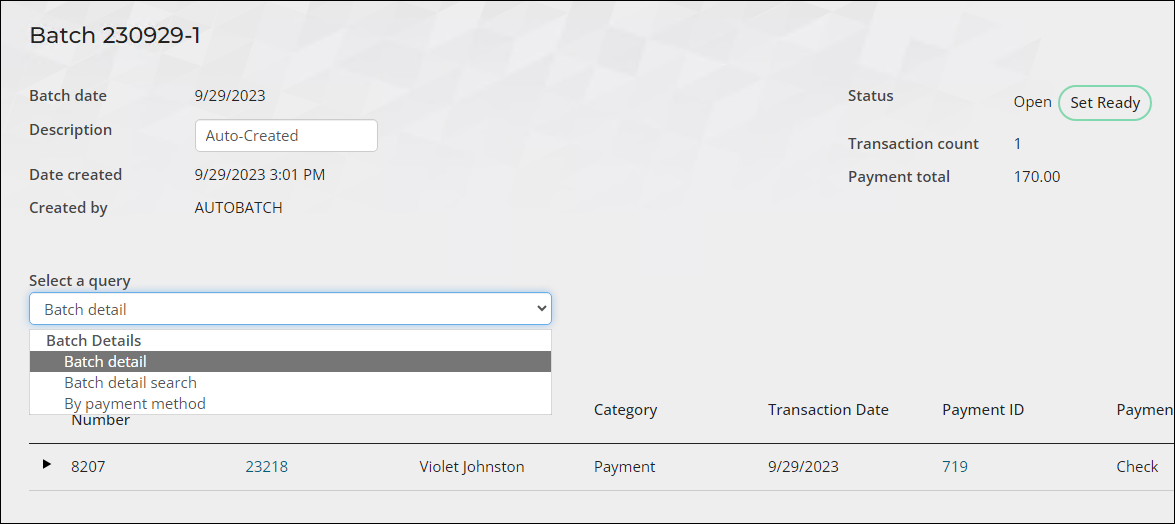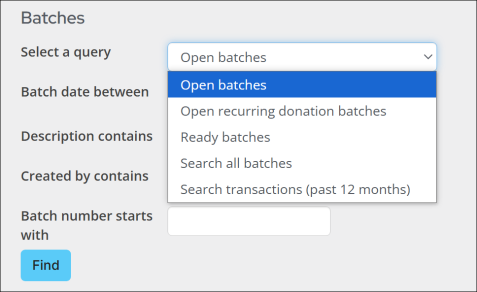To find and view batches, do the following:
- Go to Finance > Batches.
- The Select a query drop-down has the following queries to assist in finding the batch:
- Open batches - Displays all open batches. Out-of-the-box, this search query runs by default when you navigate to the initial Batches screen.
- Open recurring donation pledge batches – Displays a list of open batches from which you can select batch details.
- Ready batches - Displays all batches with a status of Ready. These batches are ready to be processed and no longer accept new transactions.
- Search all batches - Displays search criteria fields that allow you to filter the batches that display in the list. Enter the appropriate search criteria and click Find.
- Search transactions (past 12 months) - Allows users to find a batch by searching the transactions from within the past 12 months for a transaction number, Bill To ID, customer, or payment method.
- (optional) My batches - This search query displays all batches created by the currently logged-in user. If your system is configured to create separate batches for each staff user, then you can add this query to allow staff users to view only their batches.
Note: Out-of-the-box, this query does not appear in the drop-down. Add this query to the Select a query drop-down by copying it from the $/Samples/Batches folder into the Batch Search folder ($/Accounting/DefaultSystem/Queries/Batches/Batch Search).
- Select the Batch number to open the batch window.
- The following details are available in the batch:
- Batch date
- Description – The Description entered when this batch was created. The Description can be edited. Simply modify the text and click Save.
- Date created – The date on which the batch was created.
- Created by – The user who created the batch.
- Status – The Status of the batch can be edited. See Modifying the batch status for more information.
- Transaction count – Number of transactions currently in the selected batch.
- Transaction total – Total amount of all transactions currently in the selected batch.
- Post Batch – See Posting batches for more information.
- Run Report – See Running batch reports for more information.
- Export – See Exporting a list of transactions in a batch for more information.
- Use the Select a query to filter the listed transactions. Select from the following search queries:

Adding additional queries to the batches window
From the Batches window, there are several queries to choose from; however, you may want to modify an existing query or add a new query.

Do the following to add an additional query to the Batches window:
- Go to RiSE > Intelligent Query Architect.
- Navigate through the following folder path: $/Accounting/DefaultSystem/Queries/Batches/Batch Search.
- Select a query, then click Organize > Copy.
- Click Organize > Paste. The query must be located in the Batch Search folder to appear in the Batches window.
- Open the copied query and make the desired edits. You must have a property named Batch Number in your query in order for the query to filter batches. If you do not have a property named Batch Number, you must add Batch_Number to the Alias field on your property.
- Give the query a new name, then Save.
- Go to Finance > Batches, and click the Select a query drop-down to confirm the query now appears.
